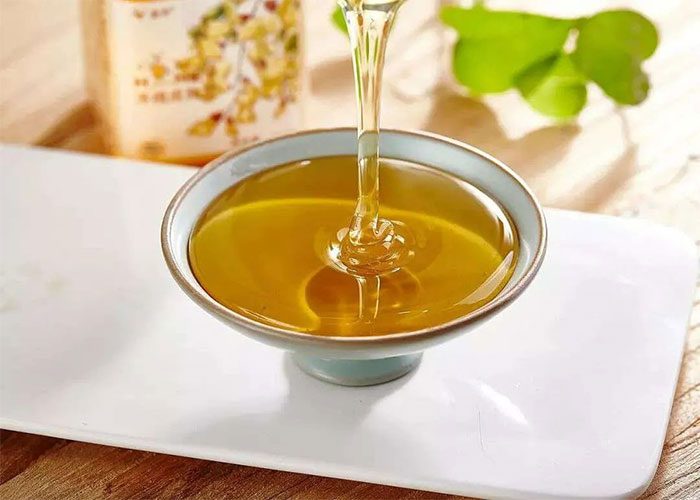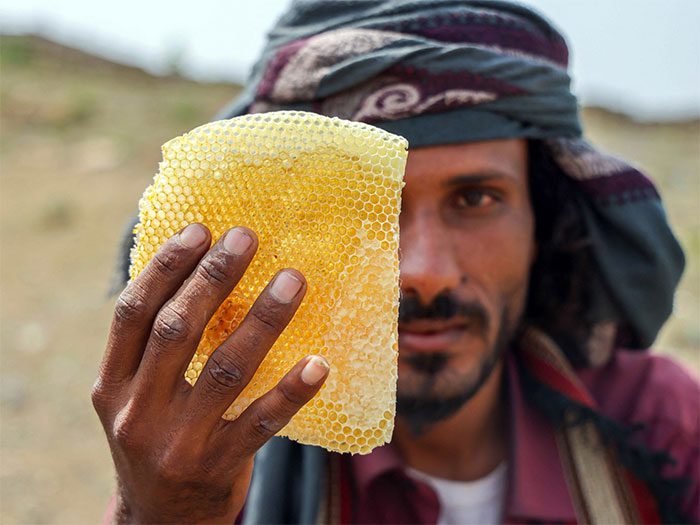Nearly all packaged food available on the market has an expiration date. Whether it’s bottled water, salt, or other food products, the expiration date is clearly labeled on the packaging. Although there is a “best before date”, some foods may spoil earlier due to improper storage and other reasons.
Of course, there are some types of food that can last for years, even decades or centuries, as long as they are stored properly. Examples include honey, salt, and high-proof alcohol. Some items, like high-quality liquor, don’t even need an expiration date.
Meanwhile, honey is a natural food rich in nutrients, made from nectar collected by bees from flowering plants and stored in their hives. Although bottled honey sold in supermarkets has an expiration date, typically ranging from 18 to 24 months, in reality, honey can last for several years or even more than a decade if stored correctly.

The ancient Egyptians are perhaps the most famous civilization known for utilizing the unique properties of honey in daily life. The long-standing connection between early beekeeping and Egypt was only reinforced when sealed jars of honey were discovered after researchers raided the tomb of Tutankhamun in 1922. (Photo: Zhihu)
In fact, American archaeologists discovered a jar of honey in an ancient Egyptian pyramid in 1913. It was determined that the jar was over 3,000 years old, and surprisingly, the honey inside was completely intact and still edible.
This thick honey appeared to have a high moisture content, yet it’s puzzling why it remained preserved for thousands of years without spoiling.
Scientists explain that food spoilage is often related to organisms, particularly microorganisms. When microorganisms proliferate in food, they can cause mold, discoloration, stickiness, and bad odors. When these conditions occur, the food becomes spoiled and inedible. If consumed, it can lead to adverse reactions such as diarrhea, and in severe cases, may even threaten life.
To preserve food for extended periods without spoilage, the most crucial factor is whether the food contains preservatives or possesses self-preserving properties that can inhibit the reproduction of microorganisms. High sugar content, high salt content, strong acidity, strong alkalinity, and various other environments significantly affect food quality and shelf life.
The shelf life of certain foods can be significantly extended by processing and preserving them with large amounts of sugar or salt. For instance, bacon is made from fresh pork that is salted and dried.
<pHowever, while most foods can be preserved for long periods using various methods, this only ensures that the food does not spoil. If stored for too long, the taste and quality of the food often diminish.

Perhaps the most daring and adventurous thing that explorers have done on their journeys is tasting the 3,000-year-old honey, and they were amazed to find that after all that time, it remained fresh and sweet. (Photo: Tastingtable).
There are three reasons why honey can be preserved for such a long time:
First, the natural moisture content of honey is typically below 20%, and its main components are simple sugars like glucose and fructose. Honey is a supersaturated sugar solution that crystallizes at low temperatures; the crystallized part is glucose, while the non-crystallized part is mostly fructose. Sugar has a strong hygroscopic ability, and the osmotic pressure of a supersaturated sugar solution like honey is high enough to cause the cell fluids of microorganisms to leak out of their cell membranes, leading to dehydration and death of the microorganisms.
Second, honey has a high acid value, with a pH value ranging from 3 to 4.5. In this pH environment, many microorganisms cannot grow and reproduce, which can also inhibit the spoilage of honey to a certain extent. It is important to note that due to honey’s acidity, it should not be stored for long periods in poor-quality metal or plastic containers.
Third, natural honey contains a certain amount of antibacterial substances like hydrogen peroxide, which can inhibit the growth and reproduction of microorganisms.
The honey discovered by American archaeologists in the ancient Egyptian pyramid, which has been preserved for over 3,000 years, remains intact not only because honey itself can last a long time, but also due to the relatively favorable local climate—dry, with the honey jar stored in a sealed tomb, making long-term preservation easier.
In summary, when storing honey, it is best to keep it tightly sealed in a cool, dark place, avoiding exposure to water and humid air. Additionally, honey is most susceptible to yeast; if contaminated with yeast due to improper storage, it can ferment quickly and spoil.





















































